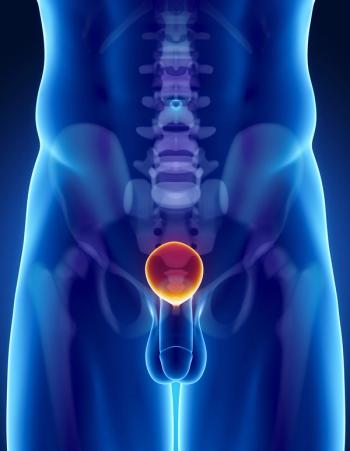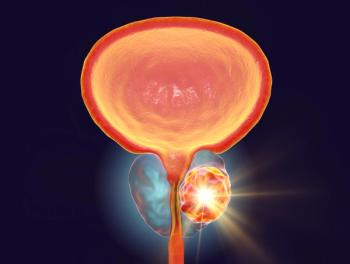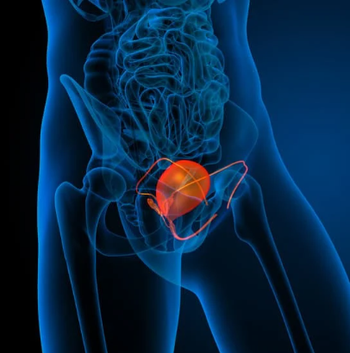
Oncology NEWS International
- Oncology NEWS International Vol 6 No 10
- Volume 6
- Issue 10
Study Questions Value of Nerve-Sparing Prostatectomy
BOSTON-Between 1984 and 1990, the age-adjusted rate of radical prostatectomy to treat early prostate cancer increased almost sixfold. One reason may be that physicians and patients believed, based on published reports, that newer nerve-sparing procedures gave patients a much greater chance of retaining sexual potency after surgery.
BOSTONBetween 1984 and 1990, the age-adjusted rate of radical prostatectomy to treat early prostate cancer increased almost sixfold. One reason may be that physicians and patients believed, based on published reports, that newer nerve-sparing procedures gave patients a much greater chance of retaining sexual potency after surgery.
Now, a study from scientists at Harvard Medical School suggests that the published reports of the incidence of impotence after various types of radical prostatectomy, including nerve-sparing procedures, may be low because patients may not always report this adverse event to their physicians.
When patients are asked directly about sexual functioning in surveys, they report much higher rates of postoperative sexual and urinary dysfunction, the researchers said. But most patient and physician surveys have been retrospective, and pretreatment impotence and incontinence, prevalent in older men, are difficult to assess accurately through retrospective studies.
To remedy this problem, the Harvard researchers, in their study, assessed sexual functioning both before and after surgery. They looked at a group of 94 men enrolled in a cohort study of early prostate cancer treatment. The patients completed questionnaires concerning their sexual and urinary function presurgery and again 3 and 12 months after surgery.
The researchers had adequate information on all men concerning the type of surgical technique used (non-nerve-sparing, unilateral nerve-sparing, or bilateral nerve-sparing). However, because some questions on sexual function were inadvertently omitted from the questionnaire at the start of the study, information on sexual function for all time periods was available for only 49 of the subjects.
Of these 49 patients, 37 were treated with a nerve-sparing procedure, 18 with unilateral nerve-sparing prostatectomy and 19 with bilateral nerve-sparing prostatectomy.
Few Report Adequate Erections
Twelve months after surgery, most men reported that their erections were inadequate for intercourse, including 15 of the 19 men who had bilateral nerve-sparing surgery. No apparent benefit was found with unilateral nerve preservation.
Generally, nerve-sparing therapy was associated with more use of absorbent pads three and 12 months postsurgery. Urinary incontinence was substantial in this group at three months, but not at 12 months, postsurgery (J Natl Cancer Inst 15:1117-1123, 1997).
Furthermore, the observed benefits of nerve-sparing surgery, however small, may in fact be attributed to patient selection and not the technique per se, the researchers said.
In this study, the men who underwent nerve-sparing radical prostatectomy, particularly of the bilateral type, were younger and had better prognostic features than the men who did not receive the nerve-sparing procedure. Of note, those who underwent nerve-sparing surgery had better presurgery sexual functioning. Before surgery, 9 of the 12 men not treated with a nerve-sparing procedure reported inadequate erections, compared with only 6 of 18 men who underwent unilateral nerve-sparing prostatectomy and one of 19 men who underwent bilateral nerve-sparing prostatectomy.
The authors concluded that nerve-sparing prostatectomy, particularly the unilateral technique, improves postoperative sexual function to a lesser extent than reported previously, and that some of the previously reported benefit may stem from the fact that men with preoperative impotence and more advanced cancers are less likely to receive nerve-sparing surgery.
The authors of the study were J.A. Talcott, P. Rieker, J.A. Clark, and P.W. Kantoff of Dana-Farber Cancer Institute and Harvard Medical School; K.J. Propert of Dana-Farber and the Harvard School of Public Health; K.I. Wishnow of New England Deaconess Hospital and Harvard Medical School; and J.P. Richie of Brigham and Womens Hospital and Harvard Medical School.
Articles in this issue
about 28 years ago
Toremifene, Tamoxifen Equivalent in Advanced Breast Cancerabout 28 years ago
Fluorescence ‘LIFE’ Images Spot Occult Lung Cancer Lesionsabout 28 years ago
The Issue That Won’t Go Away: Screening Mammographyabout 28 years ago
News in Brief...about 28 years ago
Concurrent Better Than Sequential Chemo-RT in NSCLCabout 28 years ago
Consumer Version of Merck & Co’s Famous Manual Is Availableabout 28 years ago
A Talk With Dr. Richard Klausner, Head of the NCIabout 28 years ago
Age Is a Factor in Survival of SqCC of the Head and Neckabout 28 years ago
Symptom-Based Staging of Head & Neck CancerNewsletter
Stay up to date on recent advances in the multidisciplinary approach to cancer.














































































